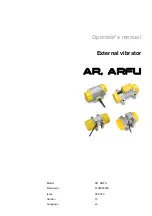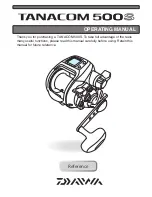
Radial Engineering Ltd.
Firefl y™ Tube Direct Box
True to the Music
®
9
Adjusting the high pass fi lter
One of the most effective features built into the Firefl y is the high-pass fi lter. This variable
control lets you eliminate low frequency resonance from the instrument and produce a cleaner
more defi ned sound. This is benefi cial for both studio recording and on a live stage.
20
20k
50
100
200
500
1k
2k
5k
10k
Hz
0dBu
Freq Response Graph For High Pass Filter
In the studio, low frequencies can often blend together causing modulation and beating as
they compete in the same frequency bands. By rolling off unneeded bottom end, you can
more easily combine instruments and create a less congested recording. This ‘Nashville’
trick is often used to size various acoustic instruments such as contra bass, acoustic guitar,
banjo and fi ddle to create a more uniform and pleasing mix. Start with the high-pass fi lter set
completely counter-clockwise. This essentially dials the fi lter out of the circuit. Slowly increase
the cut-off frequency by rotating the control clockwise. You will hear it as it takes effect. Try
experimenting with various cut-off points to get a feel as to what sound best to you.
In live situations, the high –pass fi lter is particularly effective at eliminating low frequency
resonant feedback. By cutting out excessive lows, you will also gain more control over the
mix. Cutting lows reduces the demands on the PA system which in turn reduces distortion.
And if you have ever played electric guitar you know that feedback occurs much more readily
with a distorted sound... so yes, the same applies with acoustic instruments: less distortion
equals less feedback.
SETTING THE OUTPUT CONTROLS
The Firefl y XLR output is equipped with two switches: a
180° polarity reverse and a ground lift. Start by setting both
of these to the outward position.
180° polarity reverse
The 180° polarity reverse can perform various functions. When pushed in, this toggles the
electrical phase at the balanced XLR output by swapping pin-2 and pin-3. If you so happen
to be using some older equipment that does not follow the AES standard (pin-2 hot), this can
be used to reverse the polarity and bring the Firefl y into proper electrical phase.
More often than not, the polarity reverse will be used for other uses. For instance, in the
studio, you may be combining the direct feed from the Firefl y with a microphone. Depending
on where the microphone is positioned in the room, you may fi nd that reversing the polarity
can help fatten the tone.

































